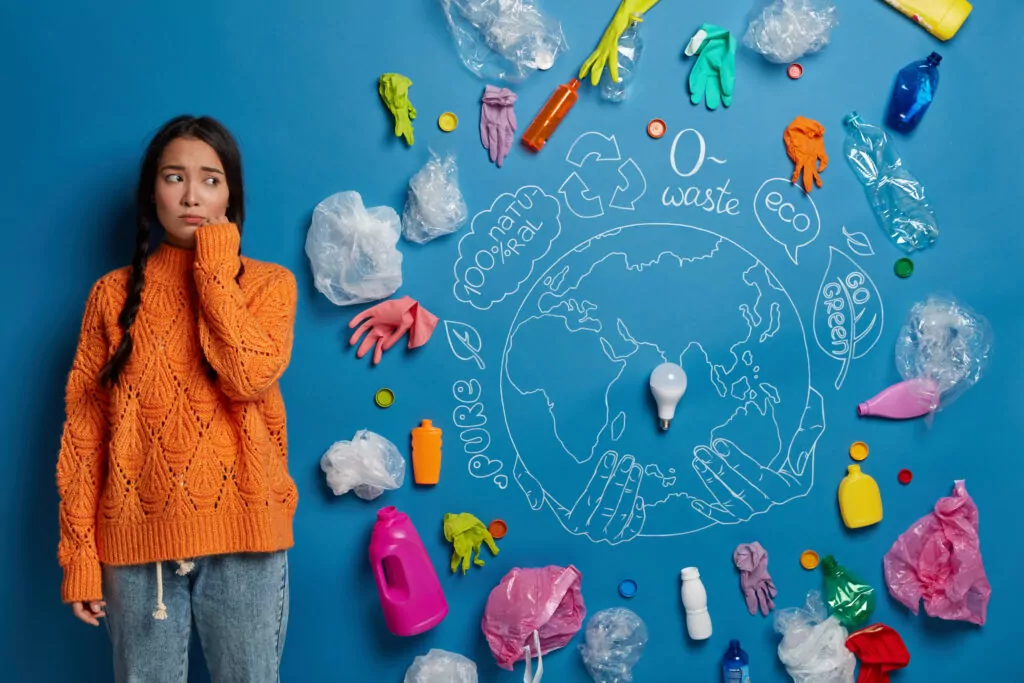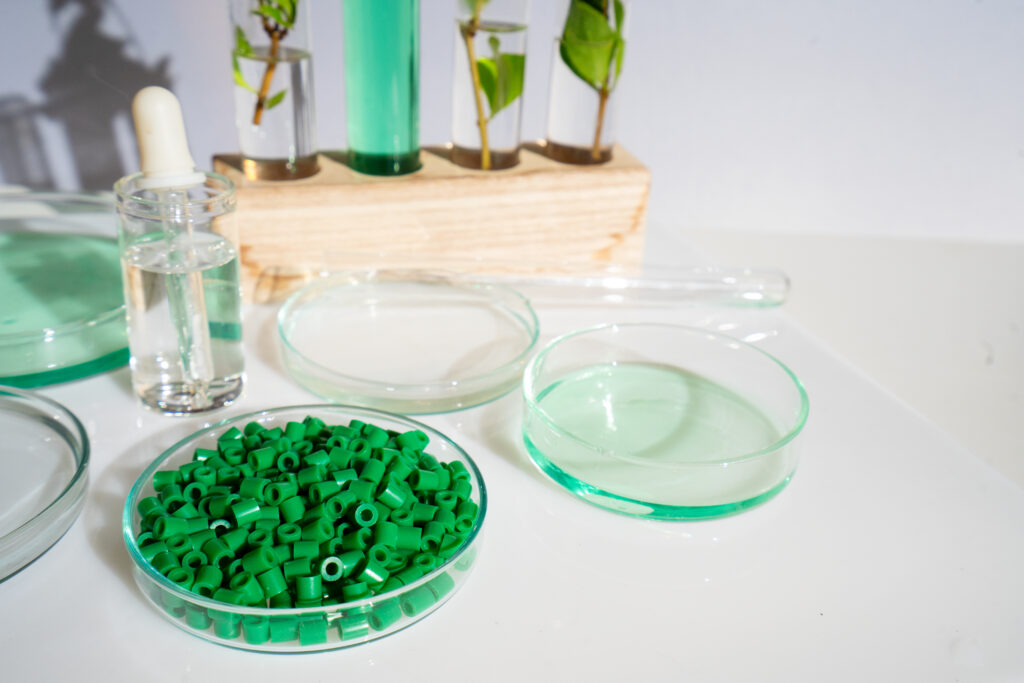Biodegradable Materials That Degrade on Their Own: 7 Breakthroughs in Sustainable Packaging Solutions
A new generation of biodegradable materials is redefining how we manage waste. Forget industrial composting—today’s smart sustainable packaging solutions are built to vanish on their own.

A new wave of biodegradable materials is transforming how we think about waste. Traditional bioplastics often require industrial composting or high heat, but the latest innovations in self-degrading bioplastics are changing the game. These are smart, responsive materials designed to decompose naturally—prompted by nothing more than sunlight, moisture, or microbes in the soil.
This is not just progress. It’s a quiet revolution in sustainable packaging, where waste can vanish as easily as it was created.
What Are Self-Degrading Bioplastics and How Do They Work Naturally?
Unlike conventional biodegradable plastics, these new-generation materials break down naturally without human intervention. Here’s how:
- UV light exposure triggers enzymatic activity
- Moisture and oxygen promote molecular breakdown
- Natural microbes complete the degradation process
There’s no need for machinery or chemicals. Just nature.
These self-degrading bioplastics are ideal for:
- Single-use packaging
- Disposable utensils and wrappers
- Products often found in litter or marine debris
By simplifying disposal and minimizing environmental harm, they bring us closer to a circular economy.
7 Innovations in Compostable Packaging That Degrade Without Help
1. How Enzymes Drive Green Packaging Innovation
Enzyme-based technologies are ushering in a new era of smart, sustainable packaging. By embedding inactive (latent) enzymes within multilayer films, packaging materials can be programmed to degrade only under specific environmental conditions—such as temperature, humidity, or pH. This ensures stability during shelf life and controlled biodegradation post-use, making it a smart solution for circular packaging.
These enzyme-triggered systems are especially promising for food and agricultural packaging, where they can help reduce contamination and ensure proper disposal. Once activated, the enzymes break down polymers into harmless by-products, such as water, carbon dioxide, and biomass—leaving behind no toxic residue or microplastics.
This breakthrough reflects a shift from conventional plastics to tailored biodegradation, where materials are designed to align with waste management systems and environmental goals. Such packaging innovation is aligned with the EU’s Circular Economy Action Plan and is actively supported by European initiatives like the Circular Bio-based Europe Joint Undertaking (CBE JU), which funds cutting-edge projects that advance bio-based alternatives to fossil-derived plastics.
Key benefits of enzyme-enabled packaging include:
- Controlled degradation under specific conditions
- Compatibility with existing food supply chains
- No harmful residues or pollutants
- Support from EU research programs and green innovation frameworks
By enabling precision biodegradation, enzyme-based materials set a new benchmark for eco-friendly packaging — helping to reduce plastic waste while maintaining product performance and safety.
2. Can Microplastics Be Eliminated Entirely?
Next-generation compostable materials are a significant advancement in the fight against microplastic pollution. These materials are designed to decompose completely in natural environments, without the need for specific industrial conditions and without leaving microplastic residue.
These innovations utilize new biopolymers or additives integrated into manufacturing. The aim is to create packaging with a defined lifespan, after which complete self-degradation is activated. This total decomposition reduces waste accumulation and eliminates a major source of microplastics from the fragmentation of conventional plastics.
Compatibility with existing manufacturing systems is a key factor for large-scale implementation. These advancements offer a route towards more sustainable packaging that contributes to the reduction of microplastic pollution.
3. Algae-Based Sustainable Packaging
Across Europe and Latin America, startups are turning marine algae into eco-packaging film. These biodegradable wrappers dissolve naturally in saltwater, making them perfect for coastal economies and marine-sensitive industries.
- Fully compostable
- Edible options available
- Leaves no marine pollution
Clearly, nature continues to offer the most elegant blueprints for sustainability.
4. Self-Cleaning Compostable Plastics and Eco-Packaging (RMIT, Australia)
Researchers at RMIT University have developed a dirt-repelling, biodegradable material. It degrades within weeks and is particularly useful for hygiene-sensitive sectors.
- Designed for food and medical packaging
- Decomposes in soil—no special conditions required
- Resists liquid and dirt exposure
A functional solution with eco-conscious design built in.
5. Plant-Based Polymers with Built-In Timers
These polymers are crafted from plants and embedded with “lifespan logic.” Once exposed to natural elements like sunlight or humidity, they begin their disappearance act.
- Customized degradation timelines
- Eliminates post-use infrastructure needs
- No industrial recycling required
6. Could Edible Materials Redefine Eco-Packaging for Events?
From edible water pods to biodegradable utensils, these innovations are reducing waste in festivals, marathons, and conferences.
- Zero waste experience
- Fun, consumer-friendly solutions
- Great for large-scale events
7. MoeBIOS: Circular Bioplastics Innovation in Europe
MoeBIOS is one of several European projects accelerating the shift to biodegradable materials and bioplastics. It supports:
- Pilot testing of sustainable packaging technologies
- Knowledge sharing
A key player supporting the behind-the-scenes infrastructure of sustainable change.
Challenges Ahead for Bioplastics Adoption
While momentum is strong, several challenges persist:
- Production costs remain higher than traditional plastics
- Consumers lack awareness or trust
- Regulations vary widely by region
However, with growing environmental pressure and policy evolution in play, the adoption of biodegradable materials is not just likely—it’s inevitable.
Why Sustainable Packaging Is a Smart Business Move
Forward-thinking companies know that eco-packaging is more than a trend—it’s a strategy.
- Enhances ESG (Environmental, Social, Governance) credentials
- Prepares for stricter regulations
- Builds brand equity with conscious consumers
- Opens access to eco-friendly funding and partnerships
Sustainable packaging isn’t just green—it’s good business.
Conclusion: A Future Where Plastic Walks Away on Its Own. The Sustainable Packaging Revolution
The idea that plastic can vanish without a trace may have once sounded like science fiction. Now, it’s science fact. These self-degrading bioplastics offer more than sustainability—they offer independence from fossil fuels, infrastructure, and pollution itself.
So the real question is no longer if we’ll adopt these materials—it’s how fast can we scale them?
Ready to Rethink Eco-Packaging ?
Explore how your brand can lead the transition to sustainable packaging using self-degrading bioplastics. Connect with forward-thinking projects like MoeBIOS or pilot your own innovation.
Don’t wait for the future—design it.
FAQs About Self-Degrading Bioplastics
What makes a plastic “self-degrading”?
It breaks down on its own in natural environments without needing industrial composting or chemical intervention.
Are self-degrading bioplastics safe for marine life?
Yes. Innovations like algae-based films dissolve harmlessly in seawater.
Can these plastics be used in food packaging?
Absolutely. Many are certified safe for food and medical uses.
How long do these bioplastics take to degrade?
Timelines vary—some degrade in days, others in weeks or months, depending on exposure conditions.
Do they leave microplastics behind?
The best technologies, like Polymateria’s, ensure complete breakdown with no microplastic residue.
Will they replace traditional plastics completely?
That’s the goal, but adoption depends on cost, scalability, and regulation.



